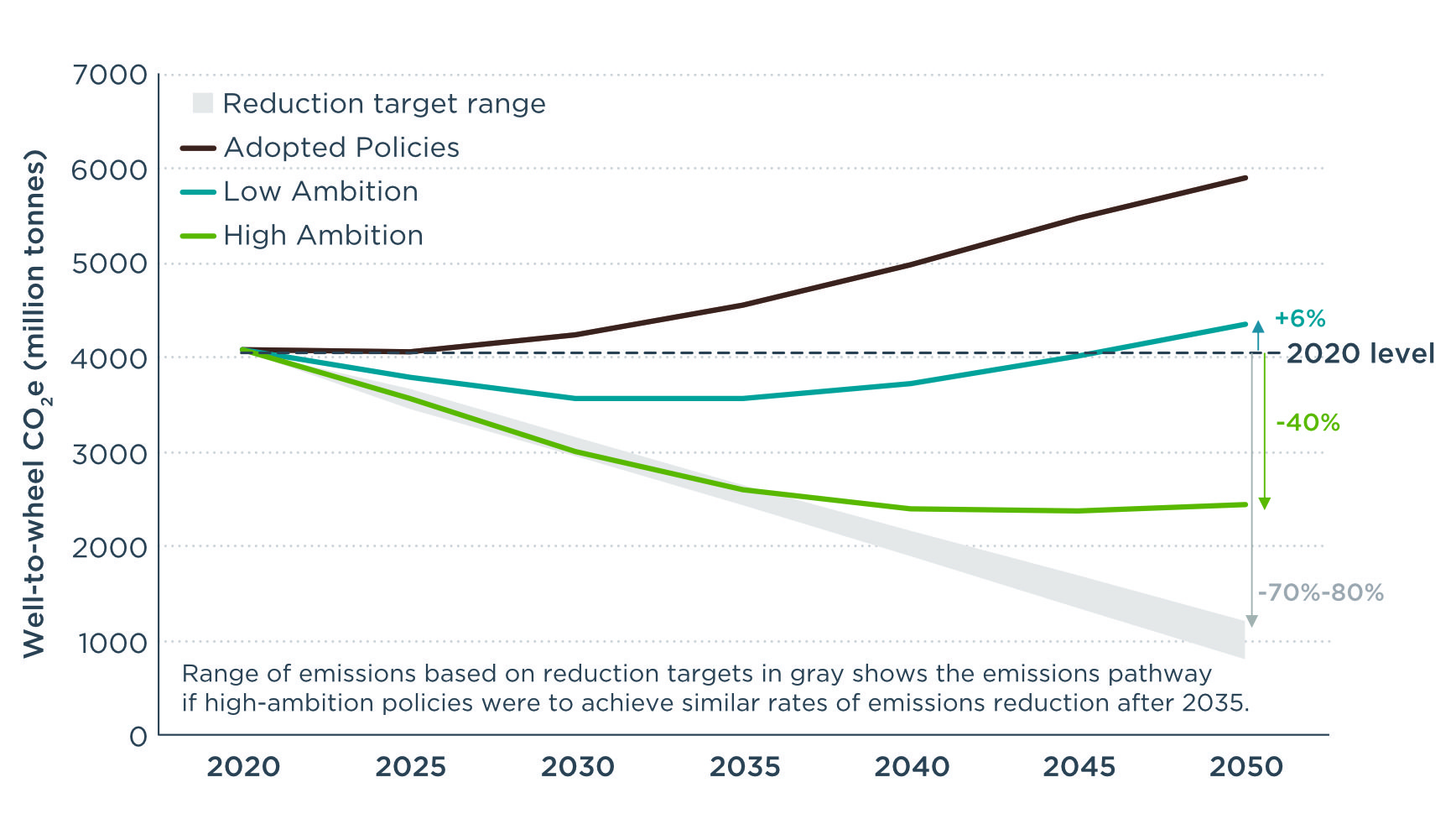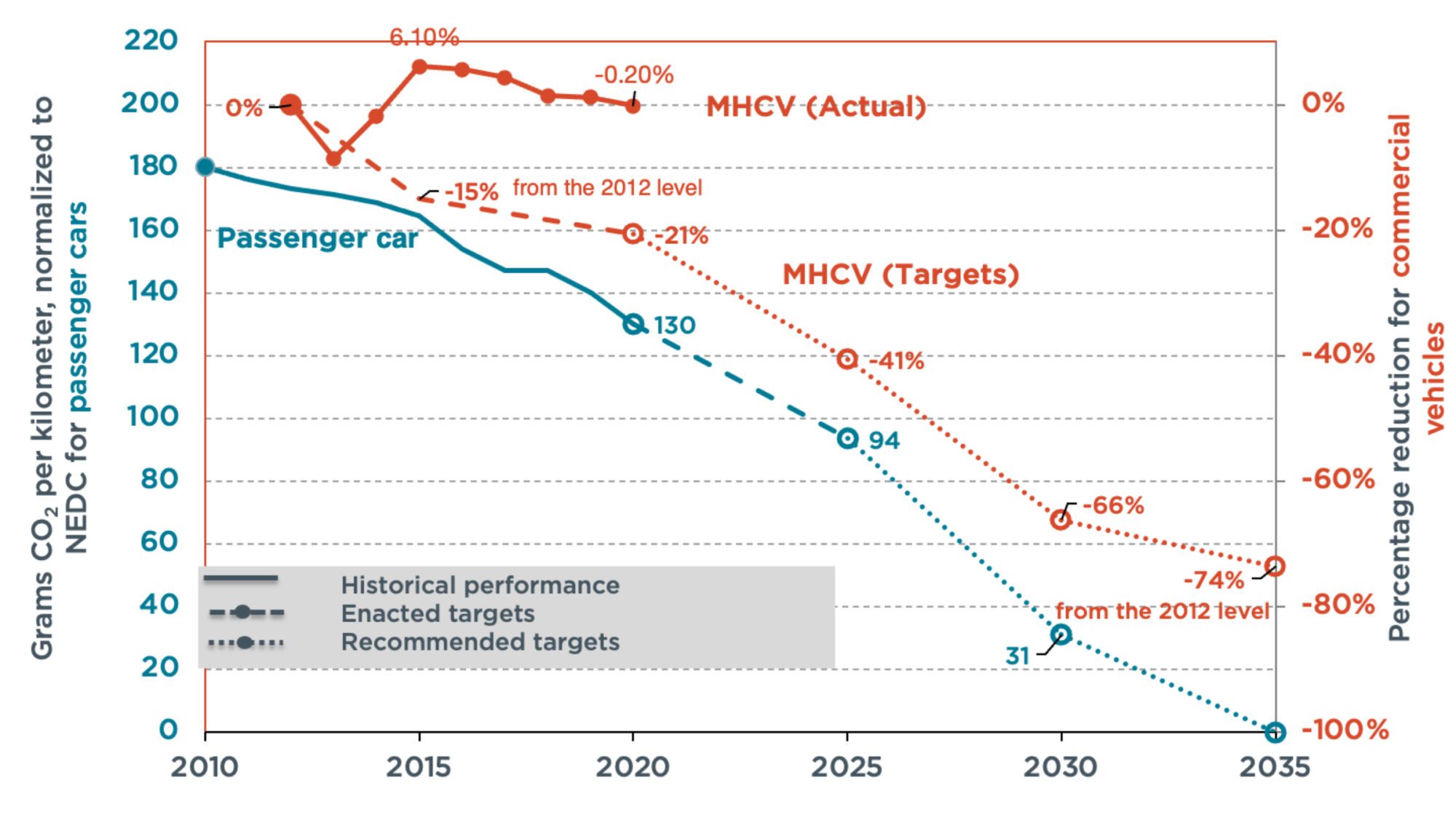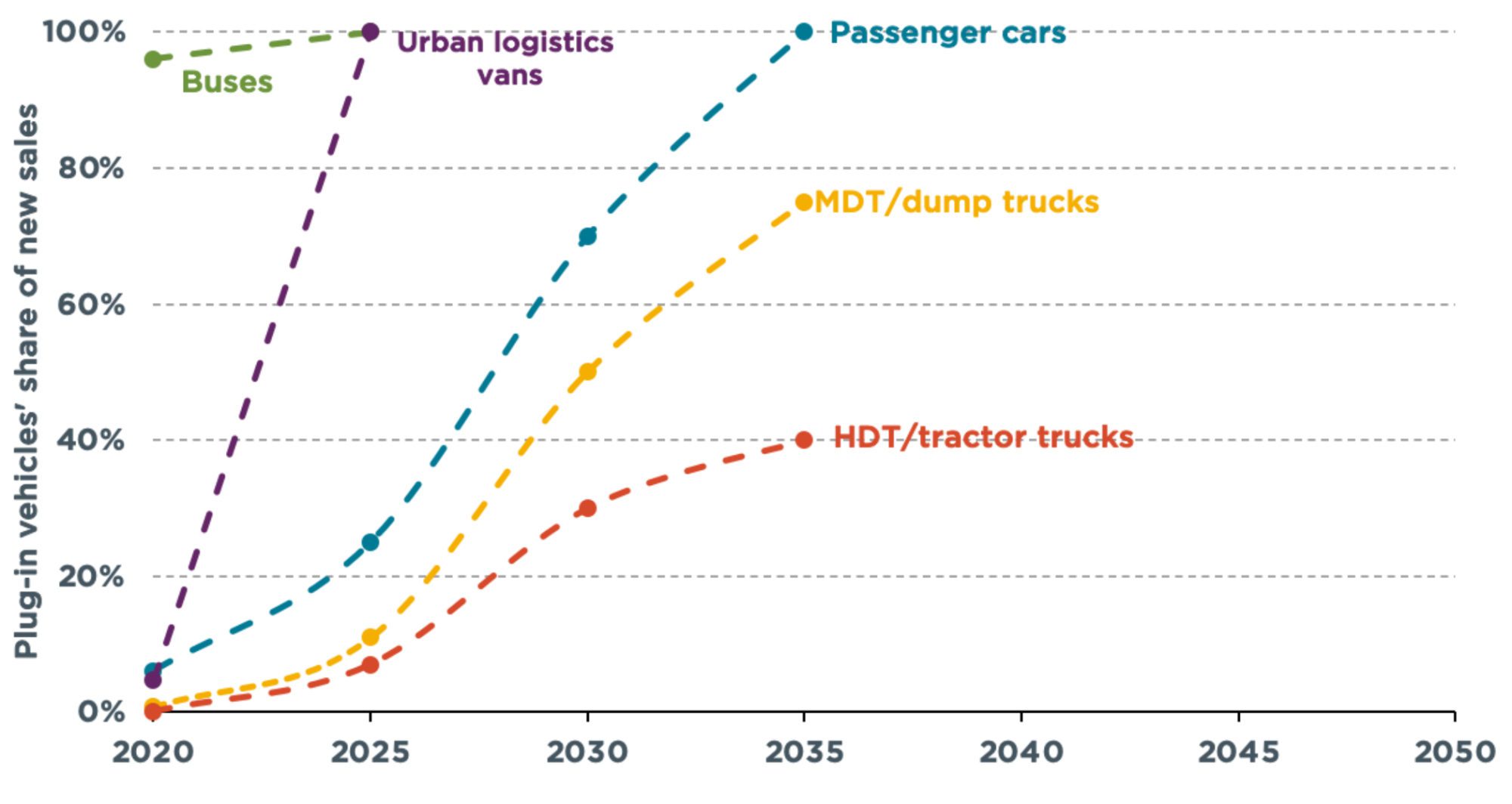Evaluation of real-world fuel consumption of light-duty vehicles in China: A 2021 update
Blog
China’s efforts to decarbonize road transport: Decent, but not sufficient
It’s been almost one and a half years since Chinese President Xi Jinping first pledged to peak the nation’s carbon dioxide (CO2) emissions by 2030 and reach net-zero greenhouse gas (GHG) emissions by 2060. To live up to these promises, China has been working hard to develop a series of roadmaps for major economic sectors. A plan to peak CO2 emissions from transportation is one of them and it’s expected to be released in the coming months.
The decarbonization of road transport is an essential component of realizing broader climate targets, and globally, approximately 21% of anthropogenic CO2 emissions come from road transport. Over the past decade, China continuously rolled out regulations and policies to reduce fuel consumption from new cars and trucks and to shift to electric vehicles. During this time, the country experienced a spectacular flourishing of its electric vehicle market. Still, ICCT’s emissions modeling shows that the pace of progress must be accelerated going forward in order to meet the aforementioned commitments. As related in our recent study, extending the current policy mix at a “Low Ambition” rate of progress (see Figure 1) would only reverse the upward emissions trend in the near term, and emissions would then start increasing again. In contrast, introducing a combination of more ambitious but still practicable measures by 2035 (“High Ambition”) could put China on a near-term pathway (2020–2035) that’s compatible with its 2060 net-zero pledge. However, continued policy developments would be needed after 2035 to achieve emissions reductions of 70%–80% by 2050 and then reach near-zero emissions by 2060.

Figure 1. Well-to-wheel climate pollutant (CO2e) emissions (GWP20) under various policy scenarios for China’s transportation sector, 2020–2050. Source: Jin et al. (2021).
The race to zero transportation emissions is becoming fiercer among the major markets. Current regulations in Europe require a 37.5% emissions reduction from new cars, 31% from new vans, and 30% from new trucks by 2030 compared with the 2021 baseline. Additionally, the European Commission’s “Fit for 55” proposal aims to further tighten CO2 targets for new cars and vans by 50%–55% by 2030 and require all new cars to be zero-emission by 2035. In the United States, the Biden administration aims to reduce economy-wide GHG emissions by 50% by 2030 and to net-zero by 2050. Transportation is the largest source of U.S. GHG emissions, and recently the U.S. Environmental Protection Agency restored its GHG emission standards for new cars and light trucks up to 2026. At present, the agency is formulating post-2026 standards that ought to help put the United States on the path toward the 50% electric vehicle target in 2030 set by President Biden. Both the United States and European Union have developed parallel regulatory pathways, one for upgrading the fuel efficiency of internal combustion engine vehicles and one for promoting the production and use of battery-electric, plug-in hybrid electric, and fuel cell electric vehicles.
China is among the leading markets with its stringent 2025 fuel consumption requirements for passenger vehicles. The 2025 target aligns with similar ambitions in other major markets like Canada, Japan, and South Korea, but beyond the near term, China’s targets need major updates to align with the country’s decarbonization commitments. As shown in Figure 2 below, our analysis finds that for China to maintain steady progress toward its 2060 target, new passenger car CO2 emissions should be limited to about 30 g/km in 2030 and to zero by 2035, and new commercial vehicles should achieve a 67% reduction in CO2 emissions by 2035 compared to today’s level (or 74% from the 2012 baseline). In addition, these targets should be enforced more strongly than they have been, as our data show that recent fuel efficiency regulations for medium and heavy commercial vehicles (MHCVs) haven’t yielded the expected real-world results (see the “Actual” line in Figure 2).

Figure 2. Recommended stringency of future CO2 standards for passenger cars and medium and heavy commercial vehicles (MHVCs) in China.
It’s important to highlight that under current technology forecasts, internal combustion engine efficiency improvement is coming close to reaching cost-effective limits. Additionally, our work has shown that electric cars in China have already reached cost parity with their conventional fuel counterparts in terms of total cost of ownership. That tipping point for various models of electric commercial vehicles could come as early as 2025.
The decarbonization paths for new cars and commercial vehicles illustrated in Figure 2 can be realized. Based on our analysis and as illustrated in Figure 3, it would mean that new buses and urban logistics vehicles need to be fully electrified by 2025 and new passenger cars need to be all-electric by 2035. For the harder-to-electrify segments—medium- and heavy-duty trucks—it is feasible to expect 75% and 40% electric vehicle market shares, respectively, by 2035. Our analysis only looked at mid-term, enforceable policies, but that doesn’t imply that China should wait to develop longer-term visions and targets. Indeed, all new HDVs should be zero-emission by 2040 in order to comport with the best chance of limiting global warming to below 2 °C, according to studies prepared for the international Zero Emission Vehicles Transition Council.

Figure 3. Recommended electric vehicle targets for various market segments in China.
Over time, China has gradually developed a concrete policy package to support the use of electricity in motor vehicles. Successful pilot programs, long-standing central subsidies, and innovative regulations deserve the credit for what has been achieved thus far. But – and yes, there’s always a “but” – China should consider an immediate adjustment to the pace of road transportation electrification, to substantially unleash decarbonization potential. California, Canada, and the European Commission recently set or proposed targets that would require that 100% of new passenger vehicle sales be zero-emission by 2035, and China should also be looking at goals with that level of ambition. It’s time for China to update its vision if it is to get ahead again.
Even though a “High Ambition” scenario doesn’t deviate from China’s actual capabilities, setting that ambition alone would not guarantee success. For example, to the extent that there remains an absence of legal authority to set GHG emission standards for cars and trucks, and ambiguity regarding authority to do that and/or ensure compliance and enforcement, that will undermine the potential emissions mitigation benefits of stricter standards. Moreover, the observable gap between laboratory and real-world passenger car fuel efficiency, which has recently reached 37%, implies that the nominal reduction target in the fuel efficiency standard isn’t being fully translated into equivalent real-world fuel savings and benefits. Third, China’s new energy vehicle targets and vision are disjointed from its long-term climate strategy. An array of more ambitious targets, regulations, and infrastructure supports will be needed to align China’s industrial development and environmental goals.
China has come a long way to cut a striking figure in the field of clean transportation. Existing strategies have drawn upon various successful experiences in other markets and have been tailored to fit into China’s socio-economic reality. Nevertheless, merely following current policies will not fulfill future promises. We recommend that China establish GHG emission standards with a robust compliance program for cars and trucks. Under such regulations, new cars would need to be zero-emission fleet-wide, and average new heavy-duty vehicles would need to cut two-thirds of carbon intensity or fuel consumption by 2035. We also urge China to consider a compatible zero-emission vehicle roadmap that requires 100% zero-emission for new sales of passenger cars and 40%–75% electric share of new sales of MHCVs by 2035, and 100% zero-emission for new sales of MHCVs fleetwide by 2040. ICCT will continue making every effort to support the development of regulations with international best practices in mind and underpinned by top-notch, data-driven analysis on technology feasibility and costs.
This is part of NDC Transport Initiative for Asia (NDC-TIA). NDC-TIA is part of the International Climate Initiative (IKI). The Federal Ministry for the Environment, Nature Conservation and Nuclear Safety (BMU) supports the initiative on the basis of a decision adopted by the German Bundestag. For more visit: https://www.ndctransportinitiativeforasia.org/.
